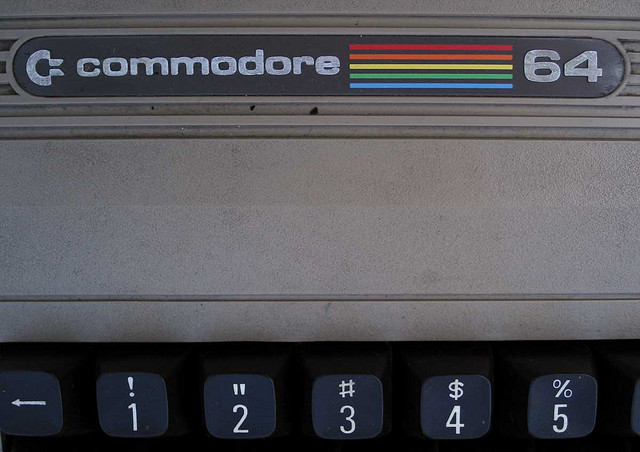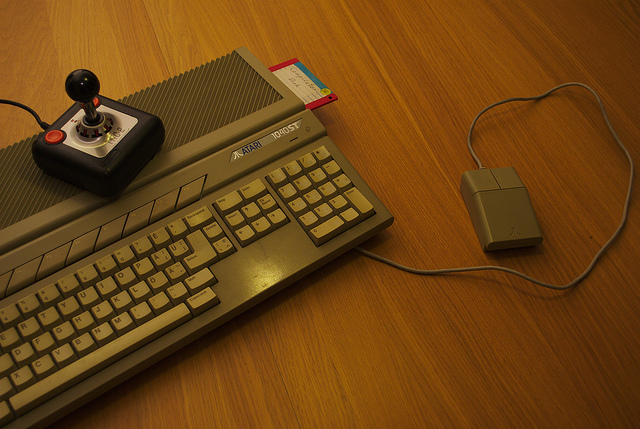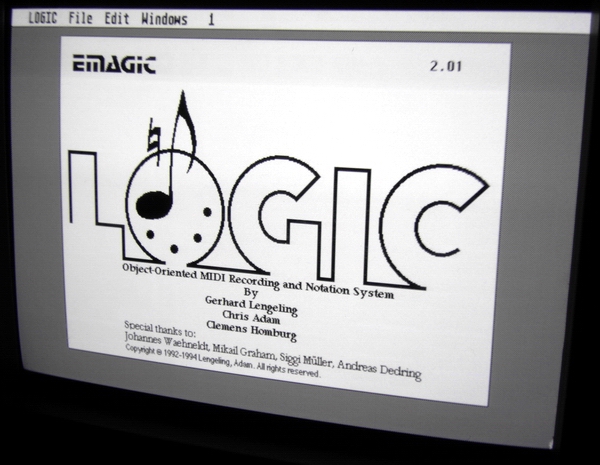Jack Tramiel, who died this week, had as deep an impact on computer music for the everyday musician as just about any computing industry pioneer. While Jobs, Woz, Moore, Grove, and Gates get a lot of the attention, Tramiel’s legacy was in making computing affordable and accessible. As such, he was indispensable to the computing revolution, and his computers were early forebears of the digital music-making Renaissance. In an extraordinary microcosm of the 20th Century, Polish-born Tramiel escaped Auschwitz, served in the US army, and built the roots of the most successful desktop computer of all time in a typewriter repair business in the Bronx. And today, when you make music with a computer, you’re connected to that extraordinary story.
Take the Commodore 64. Its ground-breaking SID chip (the 6581, with three oscillators, four waveforms, a filter, an ADSR envelope, and a ring mod) remains sought-after today. It’s easy to forget, but rival computers – including, notably, Apple – were fairly tone-deaf when it came to sound capabilities. Commodore, via a design by Bob Yannes, was the first major computing hit to include high-quality sound. The C64 single-handedly transformed the sound of game music, spawning new genres of game scores, and later becoming a major part of the demoscene and chip music movement. (In fact, you might even argue that the C64, not Nintendo game systems, really produced the initial spark for what would evolve into chip music or 8-bit music.)
Or, consider Tramiel’s second leadership role, at Atari. The Atari ST’s standard inclusion of MIDI set a benchmark that still influences machines like today’s iPad. In fact, if you’ve got an iPad handy, remember that Apple’s pro music focus is led by one Gerhard Lengeling, founder of Emagic and C-Lab, whose first products were all for Tramiel’s computers: the Commodore 64, and then the Atari ST. Maybe it should come as no surprise, then, that suitably infused with Emagic DNA, Apple would make software MIDI support standard on the iPad. Ed.: Okay, I should in fairness note that the OS team at Apple is not led by Lengeling, although I’m sure he’s enjoying that MIDI support on there. Let’s at least say that *all* of us – myself included – have expectations of MIDI that were nudged along by the Atari ST. The Atari ST set the stage for a host of music software, including being the primary platform on which the “tracker” evolved (see today’s Renoise), many of today’s sequencer features (see Logic, Cubase), and, albeit to a lesser extent, graphical music notation.
Musicians who used the ST range from 808 State to Fatboy Slim to Jean Michel Jarre – and, of course, Atari Teenage Riot. In fact, I’d go as far as arguing to say the two Tramiel machines are the only desktop computers that have actually directly touched the sound of electronic music – the C64 for the SID and its influence on game music, the Atari ST for driving a new interest in sequenced sounds and the micro-editing of trackers. There’s no “sound” of an Apple or a Windows (or even DOS) PC, but there’s a personality, a style, in a Commodore 64 or even Atari ST. We love our computers, to be fair, but the Atari and Commodore might be imagined as their own instrument. (This is a debateable opinion, and I don’t want to get too carried away, so I’m happy to hear opposing viewpoints. Or just join me in singing a love song to the SID, and waxing nostalgic about the Steinberg – Emagic – Dr. T rivalry, and we’ll leave it at that.)
What’s most compelling is that the legacy of these machines is more alive than ever. Computer musicians acquire Commodore 64s the way a guitarist might a vintage instrument, and even continue to develop software for them. (When the hardware dies, I expect this will live on in emulation. Us computer musicians don’t die; we just run on a new virtual machine.)
Then, there’s what’s next. I know that Tramiel’s aesthetic of affordability, and the approach of his chips, has inspired us on the MeeBlip open source synth. Now, we can look forward, as well, to the ultra-affordable, DIY-friendly Rasberry Pi, which itself promises to become a compelling music platform. (The moment they’re available in any quantity, I know I’ll be trying that out.)
Watching as we lose our heroes, the men and women who produced the incredible technological world in which we live, could be a sad affair. But because these individuals championed businesses with real ideas and real innovation, we see instead hope. The products of their imagination, the ones for which they fought to run their businesses, are more vibrant and alive than ever. As Silicon Valley becomes obsessed with “exit strategies,” quick fixes and disposable apps, it’s heartening to think of the people who really work to put something physical in peoples’ hands. That computing power has led to the fastest technological advances in a range of fields in the history of humanity – and, boy, can it make some fun noises, too.
With that in mind, I present for your enjoyment the Tramiel machines in images and video, as seen on CDM, with a few extras. And here’s to not only Mr. Tramiel, but all the people who worked to make these machines available.
MSSIAH is still available as an actively-developed cartridge for your Commodore computer. The cart even allows you to connect a MIDI cable.
The MIDIbox SID project produced new hardware, powered by the SID chip.
Combining these projects, here’s one of my favorite mods – a gorgeous, orange, modded C64 with SID2SID expansion and Prophet64 cartridge.
Demonstrating just how significant the machine was to music composition, The C64 Orchestra transcribes classic game music back to full orchestra.
What happens when Guitar Hero meets the C64:
A Commodore 64 speaks and plays:
Digimancy: A Commodore 64 Spouts Philosophy, Plays Modular Synths
And a reminder that Commodore will never die:
Behold sequencers we use today in their early days on the Atari ST:
Main screens of Atari ST sequencers
Pictures of Vintage MIDI Sequencers
Previously:
Musical Mods of the Commodore 64, from Traktor DJing to Knobs for Prophet64 [CDM, vintage 2006]
For Love of Chips: Chipsounds Instrument and EP and the Gear That Inspired Them [this release by Plogue of a chip instrument turned out to be a window into the chip music scene – artists and equipment – as well as a way to get these sounds on more modern computers]
More:
CNET has a nice obituary, as well as an extensive look at Tramiel and his contributions



